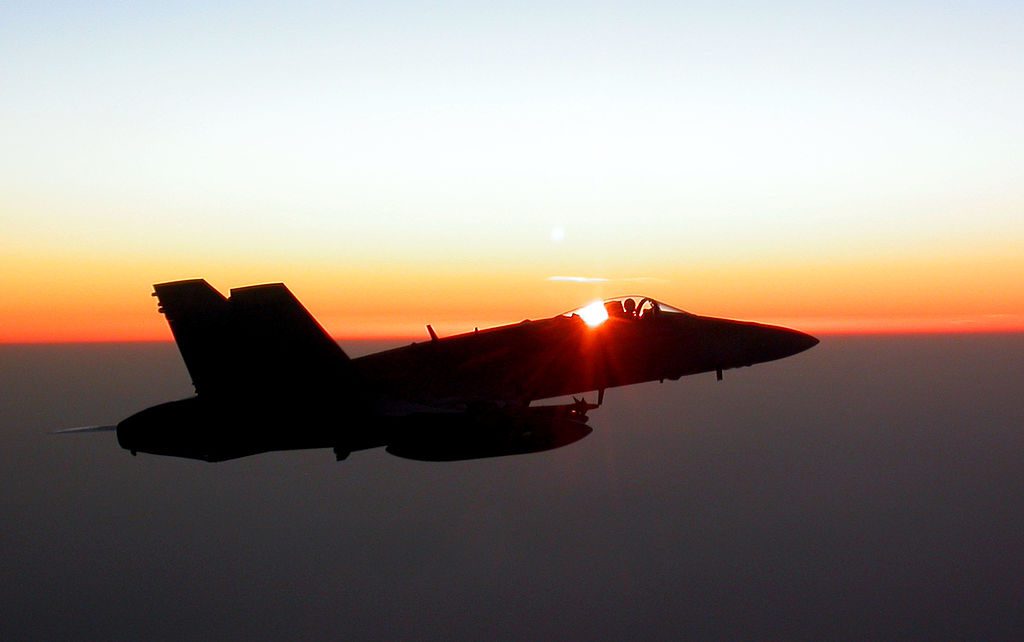Why is America ‘Contingency Planning’ for War with Iran?

The U.S. military has struck an arrangement with Saudi Arabia to use air bases and seaports in the country’s western regions. The move expands America’s ability to operate in the event of a war with Iran, as well as allowing for more military options to deal with increased attacks against Yemen’s Houthi rebels.
Described as “contingency” planning, the U.S. military says it’s already tested unloading and shipping cargo overland from Saudi Arabia’s port at Yanbu, a crucial terminal for oil pipelines in the Saudi kingdom, as well as air bases at Tabuk and Taif along the Red Sea.
America’s armed forces are already stationed in other Gulf kingdoms like Kuwait, the United Arab Emirates, and Qatar, making these new postings redundant. However, they are useful because Iran’s ballistic missile capabilities have improved, analysts say.
In a conflict with Iran, the United States would be able to transport troops in and out of the region from the west, posture fighters and other aircraft further from Iran’s missile launchers, and “lily-pad” eastward into the fight, Gen. Frank McKenzie told reporters traveling with him to the region to inspect three of the new locations.
“The Arabian Gulf would be contested waters under any scenario of armed conflict with Iran, so you look at the places where you would move your forces as they enter the theater from being in a contested area,” General McKenzie said when he visited Yanbu on Monday. “Certainly the Red Sea, the western [part] of the Arabian peninsula presents those opportunities.”
“We’re just exploring possibilities here, nothing more than that and we’re working closely with our Saudi hosts,” he said. “It is nothing more than contingency work now — certainly nothing is firm — but it gives me the opportunity to come out here and look at the ground and see.”
America’s use of the three Saudi facilities, a commercial port and an industrial port in Yanbu, as well as airfields in Tabuk and Taif, are still “highly contingent,” stressed the Marine general.
The Biden administration has been very clear that it intends to reengage with Iran and reverse the Trump administration’s hostile relationship with Iran.
So it is rather strange that this defense policy, which has been underway for over a year, has continued apace and has not yet been halted by the new administration. Consider too how these American exercises conducted in Saudi Arabia will influence the negotiating posture of Iran. More from Defense One:
“U.S. Central Command has conducted proof-of-concept tests at the industrial port at Yanbu, at least once bringing U.S. troops into the region from the Red Sea, and at both of the airfields. McKenzie said CENTCOM will continue to bring units through Yanbu on rotation to ensure the command’s logistical muscles remain flexible.
While no new infrastructure is needed at the airfields, Yanbu will require some additional development, McKenzie said. He said negotiations are ongoing to determine the precise scope of the project, which will be dual-use ‘without exception’ and funded by Riyadh, not Washington. ‘We’ll move at their pace on this,’ he said.
“An airbase, you can bring fighters of an expeditionary nature there for a few days and be gone and there’s very little footprint left. It’s a little different in industrial port,” McKenzie said. “You can see things are a little more permanent there. An airbase you can come in and come out very quickly. That’s the beauty of having a number of bases you can flex to should you be required to.”
The expansion isn’t limited to the three sites McKenzie visited on Monday, he said, but he declined to name other locations that the military is looking to use. It also won’t affect how the military is using its usual network of bases and access points in the Gulf: “You should not see this as a zero-sum game,” he said.
The idea, instead, is to enable the command to take more damage and keep fighting — what the military calls “robustness.” That “means you increase the number of bases you can operate from so if you’re hit you can take that hit, shift to another location and still be able to operate,” McKenzie explained. “What it does is it gives us options and options are always a good thing for a commander to have.”
This will need to be rectified in rather short order, since the Biden administration wants to reenter the Iran nuclear deal that the Trump administration walked away from in 2018. Meanwhile, Iran is enriching uranium at 20 percent capacity, only “a technical step away from weapons-grade levels of 90 percent,” reports the Associated Press.
The U.S. relationship with Saudi Arabia is currently fraught—the kingdom has invested heavily in U.S. arms sales that Congress has repeatedly attempted to curtail only to be vetoed by Donald Trump. Trump also deployed some 2,500 American troops into Saudi Arabia to man fighter jets and Patriot missile batteries at Prince Sultan Air Base southeast of Riyadh.
Joe Biden, back when he was running for president, referred to Riyadh as a “pariah” and promised that the Saudis would “pay the price” for the brutal killing of journalist Jamal Khashoggi. After he became president, he retreated to a more traditional posture, stating after Saturday’s drone attack on Riyadh that the U.S. would continue to “help our partner Saudi Arabia defend against attacks on its territory.”